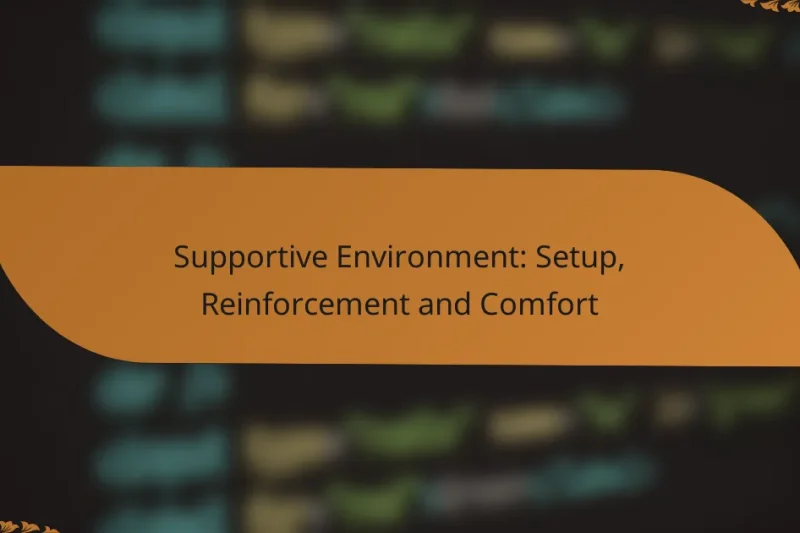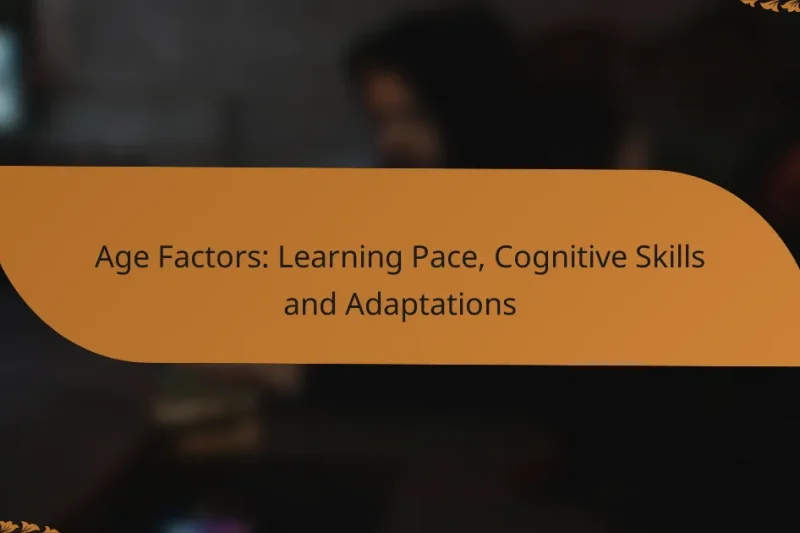Creating a supportive environment for mental health is essential for promoting well-being and comfort. By thoughtfully … Supportive Environment: Setup, Reinforcement and ComfortRead more
Overcoming Challenges in Dog Math Training
Training your dog in math can be a rewarding yet challenging experience. By employing effective strategies such as positive reinforcement and visual aids, you can make learning enjoyable for your furry friend. Addressing common obstacles like distractions and tailoring your approach to your dog’s unique needs will enhance the training process and lead to better outcomes.
Lack of Motivation: Triggers, Techniques and Encouragement
Lack of motivation can significantly hinder personal and professional growth, often stemming from various triggers that … Lack of Motivation: Triggers, Techniques and EncouragementRead more
Handling Regression: Causes, Strategies and Recovery
Regression can significantly hinder progress and performance, often stemming from various underlying factors. By understanding these … Handling Regression: Causes, Strategies and RecoveryRead more
Overcoming Distractions: Focus, Environment and Engagement
Overcoming distractions is essential for enhancing focus and productivity in today’s fast-paced world. By managing your … Overcoming Distractions: Focus, Environment and EngagementRead more
Fear-Based Reactions: Identification, Management and Solutions
Fear-based reactions can significantly impact an individual’s emotional and physical well-being, making it crucial to identify … Fear-Based Reactions: Identification, Management and SolutionsRead more
Time Constraints: Planning, Prioritization and Flexibility
Time constraints can pose significant challenges in both personal and professional settings, making effective planning essential. … Time Constraints: Planning, Prioritization and FlexibilityRead more
Age Factors: Learning Pace, Cognitive Skills and Adaptations
Age plays a crucial role in shaping learning pace and cognitive skills, with younger individuals often … Age Factors: Learning Pace, Cognitive Skills and AdaptationsRead more
What are effective strategies for dog math training?
Effective strategies for dog math training include using positive reinforcement, incorporating play, utilizing visual aids, setting achievable goals, and maintaining regular practice sessions. These methods help dogs learn mathematical concepts in a fun and engaging way.
Positive reinforcement techniques
Positive reinforcement involves rewarding your dog for correct responses during math training. This can include treats, praise, or playtime, which encourages them to repeat the behavior. For example, if your dog successfully identifies the correct number of treats, immediately reward them to reinforce that behavior.
Consistency is key; always reward the desired behavior to strengthen the learning process. Avoid using punishment, as it can create fear and hinder the dog’s willingness to engage in learning.
Incorporating play into learning
Incorporating play into math training makes the learning process enjoyable for your dog. Use toys or games that involve counting or sorting to reinforce mathematical concepts. For instance, you can toss a ball and ask your dog to bring back a specific number of items.
Games like hide-and-seek can also be adapted to include counting, where your dog must find hidden treats based on your counting cues. This playful approach keeps your dog motivated and eager to learn.
Using visual aids and tools
Visual aids can significantly enhance your dog’s understanding of math concepts. Use items like colored blocks or number cards to represent quantities visually. For example, showing two blocks while saying “two” helps your dog associate the word with the quantity.
Additionally, consider using interactive toys that require your dog to solve simple math problems to receive a reward. This hands-on approach can make abstract concepts more concrete for your pet.
Setting achievable goals
Setting achievable goals is crucial for effective math training. Start with simple tasks, such as identifying numbers or counting treats, and gradually increase the difficulty as your dog masters each level. This step-by-step progression helps build confidence and prevents frustration.
Keep your goals specific and measurable, such as teaching your dog to count to three before moving on to higher numbers. Celebrate small victories to maintain motivation throughout the training process.
Regular practice sessions
Regular practice sessions are essential for reinforcing what your dog learns during math training. Aim for short, frequent sessions of about 5 to 10 minutes, as dogs tend to have shorter attention spans. Consistency helps solidify their understanding of mathematical concepts.
Try to incorporate math training into your daily routine, making it a fun part of your dog’s day. This could be during walks, playtime, or even meal preparation, ensuring that your dog remains engaged and eager to learn.
How can I overcome common challenges in dog math training?
To overcome common challenges in dog math training, focus on creating a structured environment, minimizing distractions, and maintaining your dog’s engagement. Understanding your dog’s unique needs and behavior will help you tailor your approach for better results.
Addressing distractions during training
Distractions can significantly hinder a dog’s ability to focus during math training. To minimize distractions, choose a quiet training area free from noise and movement. Gradually introduce distractions in controlled settings to help your dog learn to concentrate despite them.
Using high-value treats or toys can help redirect your dog’s attention back to the task at hand. Start with simple exercises in a distraction-free zone, then progressively increase the complexity as your dog becomes more adept at ignoring distractions.
Managing short attention spans
Short attention spans are common in dogs, especially during training sessions. Keep training sessions brief, ideally lasting around 5-10 minutes, to maintain your dog’s focus and enthusiasm. Frequent breaks can also help prevent fatigue and keep your dog engaged.
Incorporate varied activities to maintain interest. For example, alternate between math exercises and fun tricks or games that reinforce learning while keeping your dog mentally stimulated.
Dealing with frustration in dogs
Frustration can arise when dogs struggle to grasp math concepts. Recognize signs of frustration, such as whining or disengagement, and adjust your approach accordingly. If your dog appears frustrated, take a step back and simplify the task to build confidence.
Positive reinforcement is crucial in alleviating frustration. Celebrate small successes with praise or treats to encourage your dog and create a positive learning environment. If necessary, take a break and return to the training later when your dog is more relaxed and receptive.
What tools can assist in dog math training?
Several tools can enhance dog math training, making the process engaging and effective. These tools include interactive apps, specialized toys, and online courses that cater to various learning styles.
Interactive training apps
Interactive training apps are designed to make learning math concepts fun for dogs. These apps often use games and challenges that reward dogs for completing tasks, helping them grasp basic arithmetic through positive reinforcement.
When selecting an app, look for features like customizable difficulty levels and progress tracking. Popular options may include games that require dogs to solve simple problems to earn treats or rewards.
Math training toys
Math training toys provide a hands-on approach to teaching dogs basic math skills. These toys often incorporate puzzles that require dogs to manipulate objects to achieve a goal, such as retrieving a treat based on a numerical challenge.
Consider toys that allow for varying levels of difficulty, so you can adjust the challenge as your dog learns. Look for options that encourage problem-solving and critical thinking, which are essential for math training.
Online training courses
Online training courses offer structured programs that guide owners through the process of teaching their dogs math concepts. These courses often include video tutorials, step-by-step instructions, and community support.
When choosing a course, check for reviews and success stories to ensure it meets your needs. Many courses are designed for different skill levels, so you can find one that matches your dog’s current abilities and learning pace.
What are the prerequisites for effective dog math training?
Effective dog math training requires a solid foundation in basic obedience and a good understanding of dog behavior. These prerequisites ensure that the dog is receptive to learning and can engage with the training process effectively.
Basic obedience training
Basic obedience training is essential for establishing a communication channel between the dog and the trainer. Commands such as “sit,” “stay,” and “come” create a framework for more complex tasks, including math-related activities.
Start with short training sessions, ideally lasting no more than 10-15 minutes, to maintain the dog’s focus. Use positive reinforcement techniques, such as treats or praise, to encourage desired behaviors. Consistency in commands and rewards is key to reinforcing learning.
Understanding dog behavior
Understanding dog behavior is crucial for tailoring math training to your dog’s unique personality and learning style. Dogs exhibit different temperaments and responses to training, which can affect their engagement and retention of new concepts.
Observe your dog’s reactions during training sessions. If they seem distracted or frustrated, consider adjusting the difficulty level or the duration of the sessions. Incorporating play and breaks can help maintain motivation and interest in the training process.
How does location affect dog math training?
Location plays a significant role in dog math training, influencing the distractions and stimuli a dog encounters. Urban settings often present unique challenges and opportunities compared to rural or suburban environments.
Training in urban environments
Urban environments are typically bustling with noise, people, and other animals, which can distract dogs during training sessions. This high level of stimulation may require trainers to implement strategies that help dogs focus amidst the chaos.
To effectively train in cities, consider using quieter locations such as parks or less-trafficked streets. Gradually introduce your dog to busier areas once they demonstrate proficiency in basic math commands, ensuring they remain engaged and responsive.
Additionally, using positive reinforcement techniques can help maintain your dog’s attention. Rewarding them with treats or praise when they successfully complete a task can counteract distractions and enhance learning outcomes.






